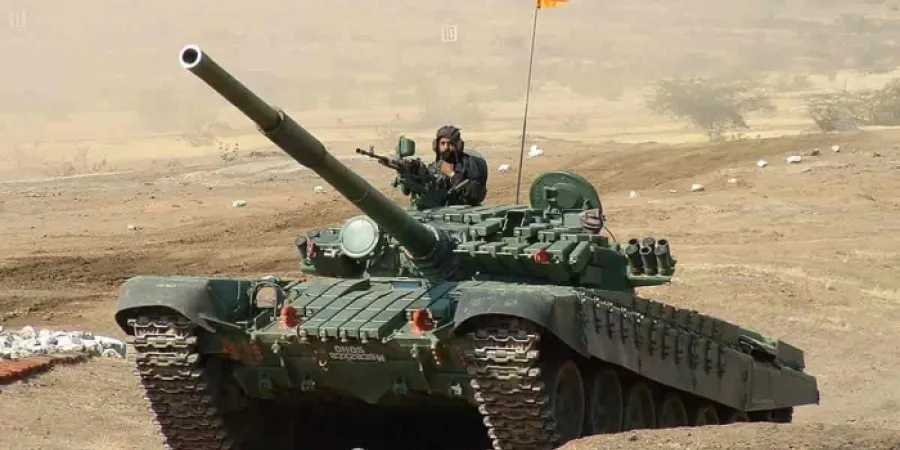India to procure 1,700 tanks to replace T-72M Ajeyas
The Defense Ministry is seeking a tank that can operate in a wide range of terrain and destroy targets including main battle tanks, armored vehicles, unmanned aerial vehicles and helicopters
Eyal Boguslavsky
| 03/06/2021
The Indian Ministry of Defence intends to procure 1,700 Future Ready Combat Vehicles (FRCVs) to replace the country's old Russian-designed T-72M/M1 Ajeya tanks. The Army Recognition website reported that according to technical requirements published by the ministry on Monday as part of a Request for Information, the FRCVs must have the capability to operate in a wide range of terrain in on-road and off-road conditions, including in high-altitude areas, plains and deserts.
According to the requirements, the FRCV must be equipped with a main weapon that is able to destroy different types of land targets, including main battle tanks, armored vehicles, unmanned aerial vehicles and helicopters. The FRCV must also be able to operate in network-centric and electronic warfare environments, and be equipped with a remotely-operated weapon station, anti-aircraft equipment to counter UAVs, new technology such as artificial intelligence and stealth features, the report said.
According to Indian military sources, the FRCV will replace the T-72M1 Ajeya, but the country's T-90S and Arjun tanks will remain in service. The Indian Army operates 3,565 main battle tanks including 122 Arjuns, 2,418 T-72M/M1 Ajeyas, 1,025 T-90Ses and 1,100 tanks of various other models.
The T-72M1 Ajeya is a Soviet-made upgraded version of the T-72 produced under license in India since 1978. The export variant of the T-72 is armed with a 125mm 2A46M cannon using a carousel automatic loading system that can hold 24 rounds.
The Defense Ministry is seeking a tank that can operate in a wide range of terrain and destroy targets including main battle tanks, armored vehicles, unmanned aerial vehicles and helicopters
The Indian Ministry of Defence intends to procure 1,700 Future Ready Combat Vehicles (FRCVs) to replace the country's old Russian-designed T-72M/M1 Ajeya tanks. The Army Recognition website reported that according to technical requirements published by the ministry on Monday as part of a Request for Information, the FRCVs must have the capability to operate in a wide range of terrain in on-road and off-road conditions, including in high-altitude areas, plains and deserts.
According to the requirements, the FRCV must be equipped with a main weapon that is able to destroy different types of land targets, including main battle tanks, armored vehicles, unmanned aerial vehicles and helicopters. The FRCV must also be able to operate in network-centric and electronic warfare environments, and be equipped with a remotely-operated weapon station, anti-aircraft equipment to counter UAVs, new technology such as artificial intelligence and stealth features, the report said.
According to Indian military sources, the FRCV will replace the T-72M1 Ajeya, but the country's T-90S and Arjun tanks will remain in service. The Indian Army operates 3,565 main battle tanks including 122 Arjuns, 2,418 T-72M/M1 Ajeyas, 1,025 T-90Ses and 1,100 tanks of various other models.
The T-72M1 Ajeya is a Soviet-made upgraded version of the T-72 produced under license in India since 1978. The export variant of the T-72 is armed with a 125mm 2A46M cannon using a carousel automatic loading system that can hold 24 rounds.



